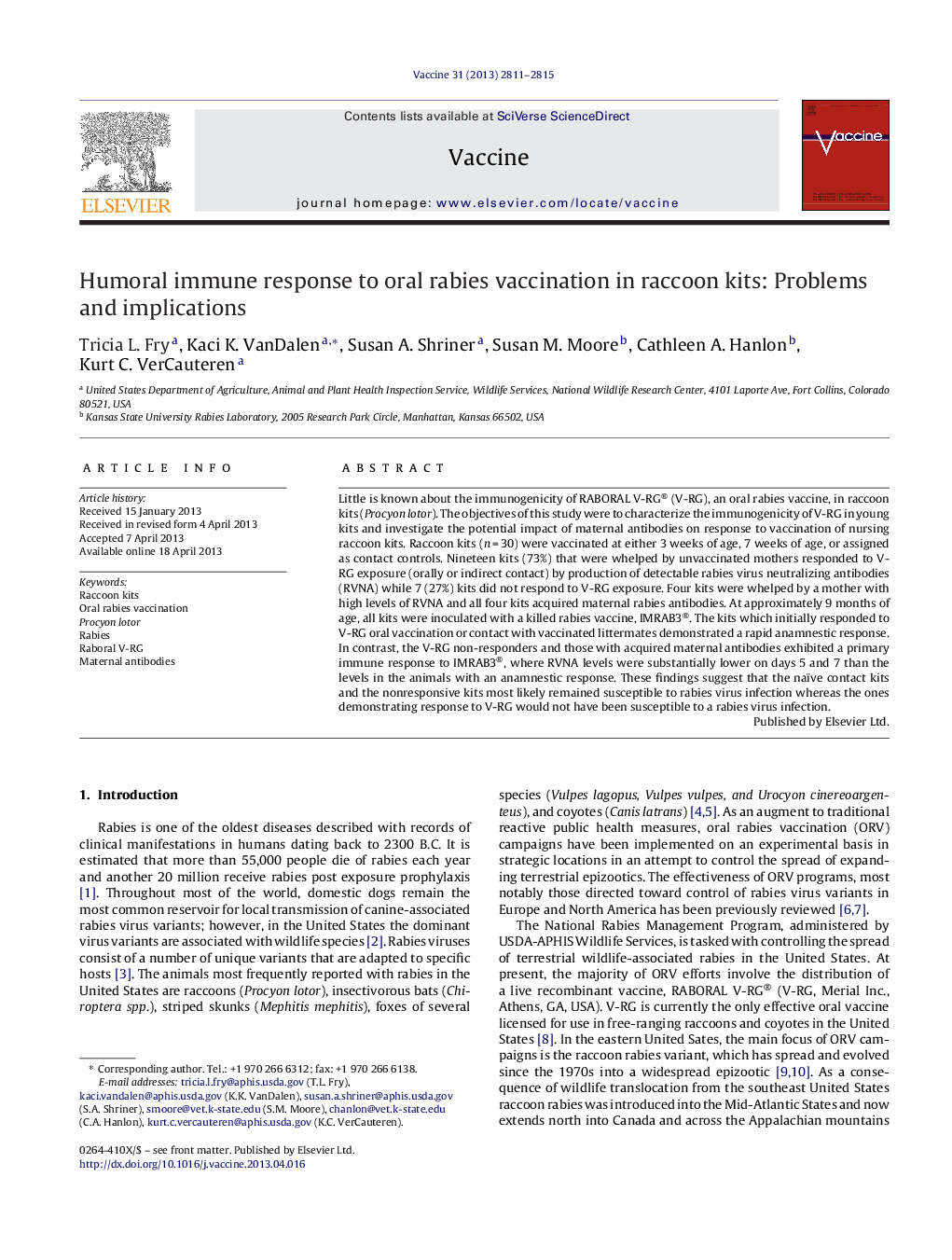| کد مقاله | کد نشریه | سال انتشار | مقاله انگلیسی | نسخه تمام متن |
|---|---|---|---|---|
| 2402596 | 1102823 | 2013 | 5 صفحه PDF | دانلود رایگان |

• Maternal rabies antibodies were detected in raccoon kits during a 26-week period.
• RABORAL V-RG successfully vaccinated 73% of naïve raccoon kits.
• Kits with maternal antibodies at the time of RABORAL V-RG inoculation did not respond to RABORAL V-RG vaccination.
• Considerations of the age of the young of the year maybe important in timing wildlife rabies vaccination.
Little is known about the immunogenicity of RABORAL V-RG® (V-RG), an oral rabies vaccine, in raccoon kits (Procyon lotor). The objectives of this study were to characterize the immunogenicity of V-RG in young kits and investigate the potential impact of maternal antibodies on response to vaccination of nursing raccoon kits. Raccoon kits (n = 30) were vaccinated at either 3 weeks of age, 7 weeks of age, or assigned as contact controls. Nineteen kits (73%) that were whelped by unvaccinated mothers responded to V-RG exposure (orally or indirect contact) by production of detectable rabies virus neutralizing antibodies (RVNA) while 7 (27%) kits did not respond to V-RG exposure. Four kits were whelped by a mother with high levels of RVNA and all four kits acquired maternal rabies antibodies. At approximately 9 months of age, all kits were inoculated with a killed rabies vaccine, IMRAB3®. The kits which initially responded to V-RG oral vaccination or contact with vaccinated littermates demonstrated a rapid anamnestic response. In contrast, the V-RG non-responders and those with acquired maternal antibodies exhibited a primary immune response to IMRAB3®, where RVNA levels were substantially lower on days 5 and 7 than the levels in the animals with an anamnestic response. These findings suggest that the naïve contact kits and the nonresponsive kits most likely remained susceptible to rabies virus infection whereas the ones demonstrating response to V-RG would not have been susceptible to a rabies virus infection.
Journal: Vaccine - Volume 31, Issue 26, 10 June 2013, Pages 2811–2815